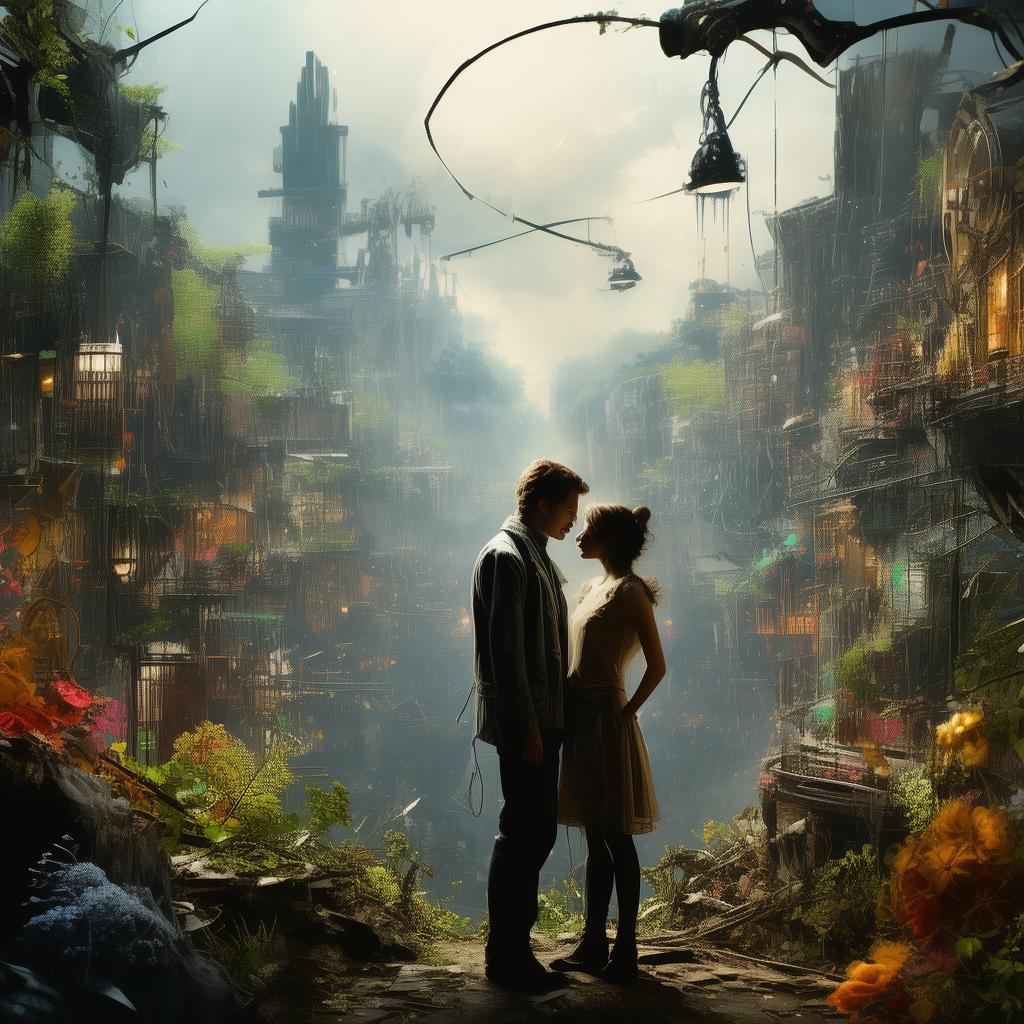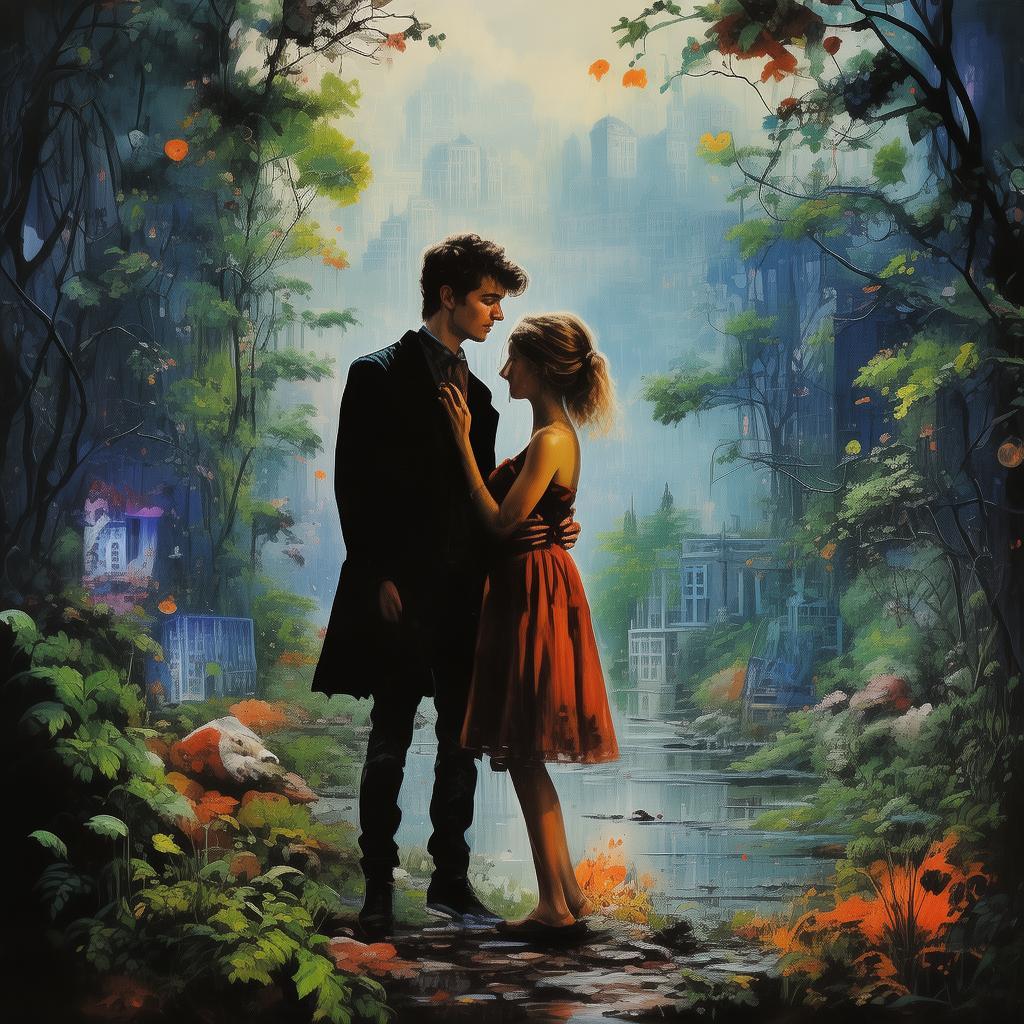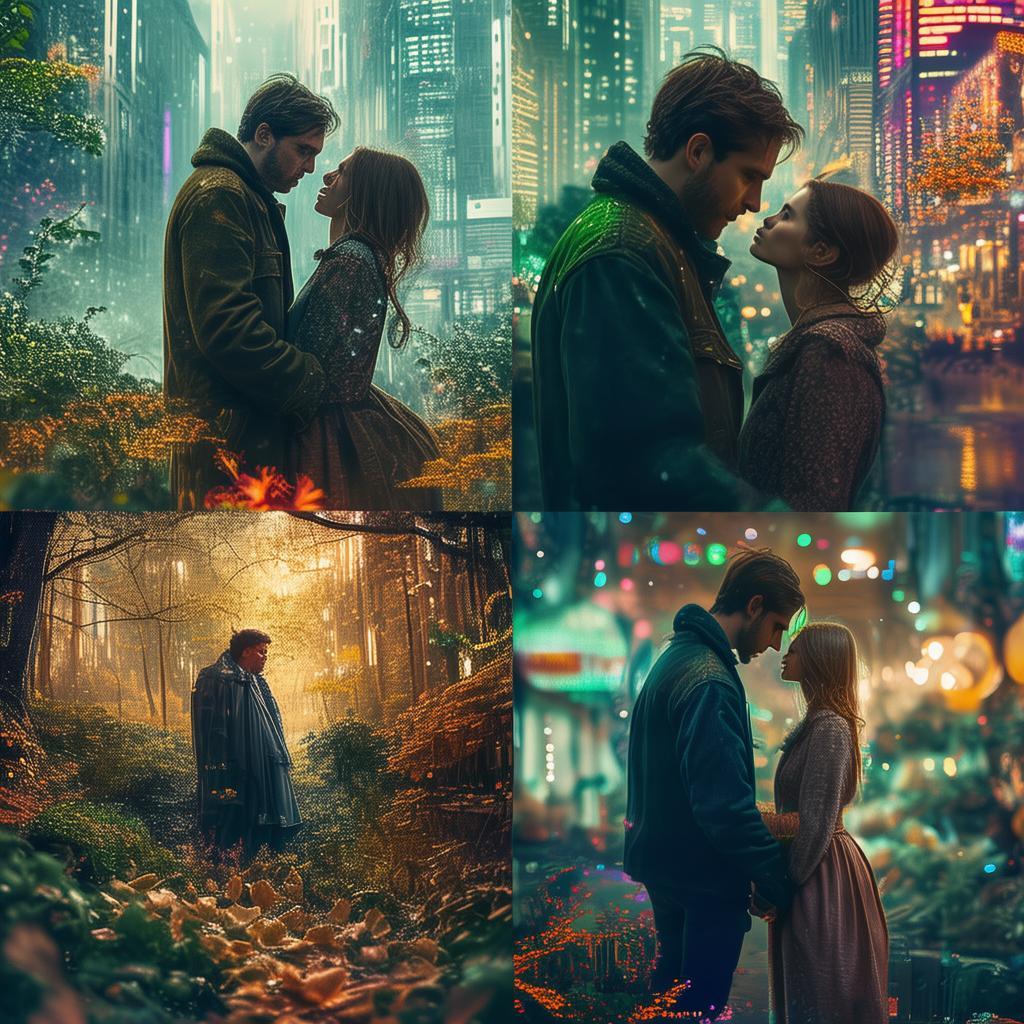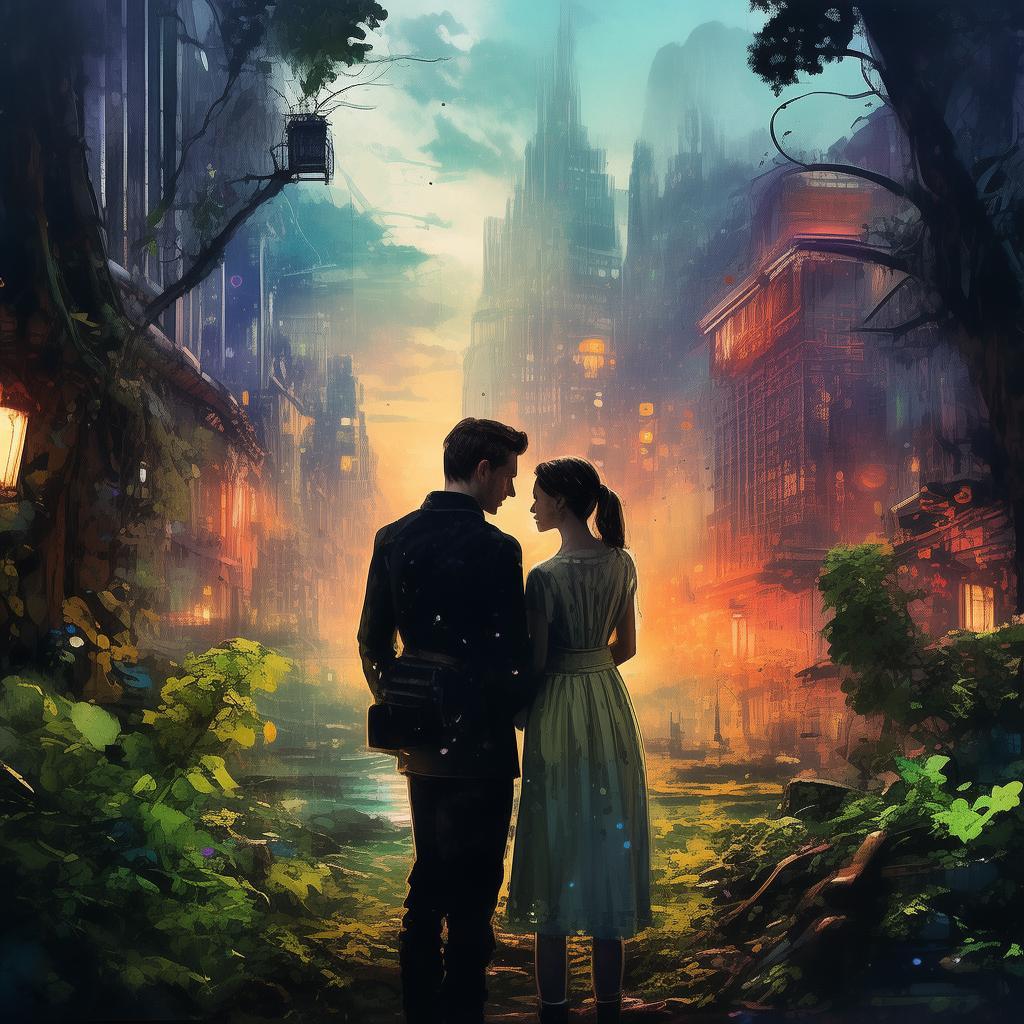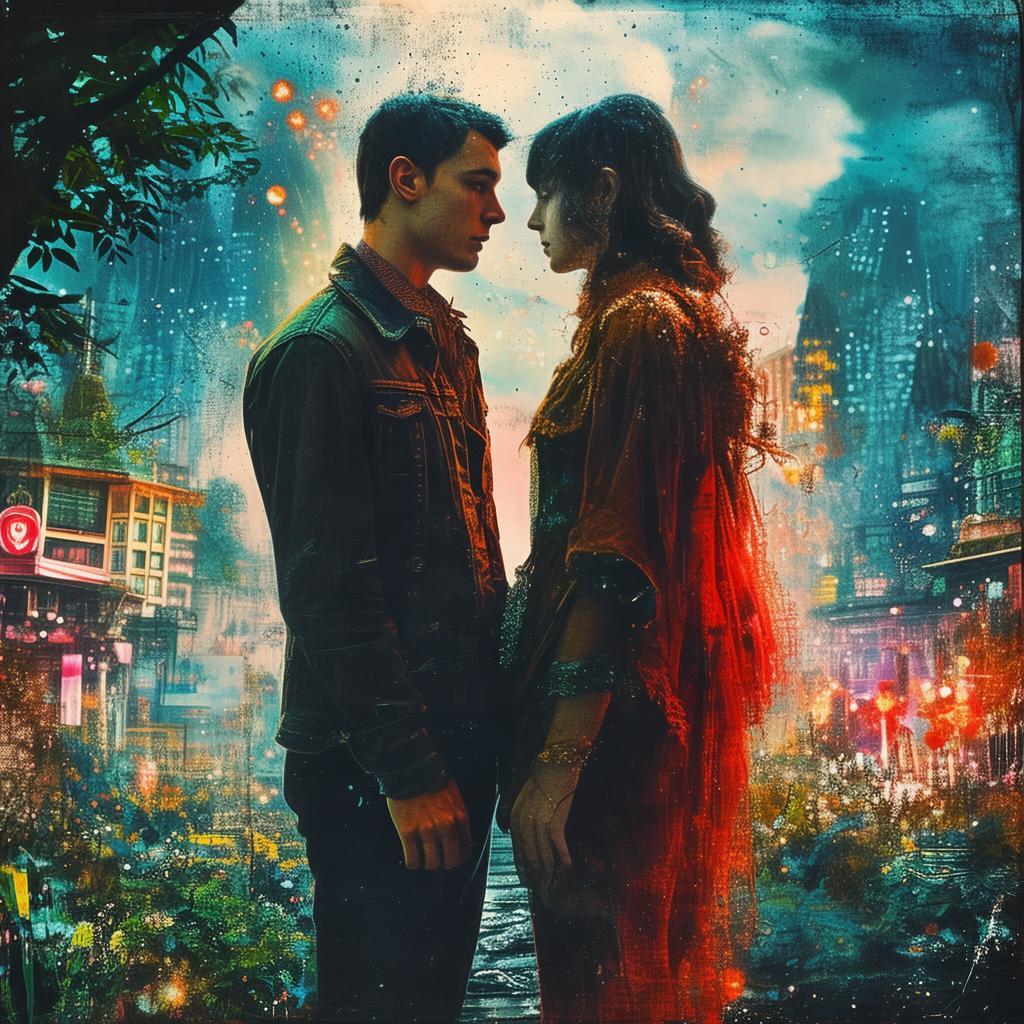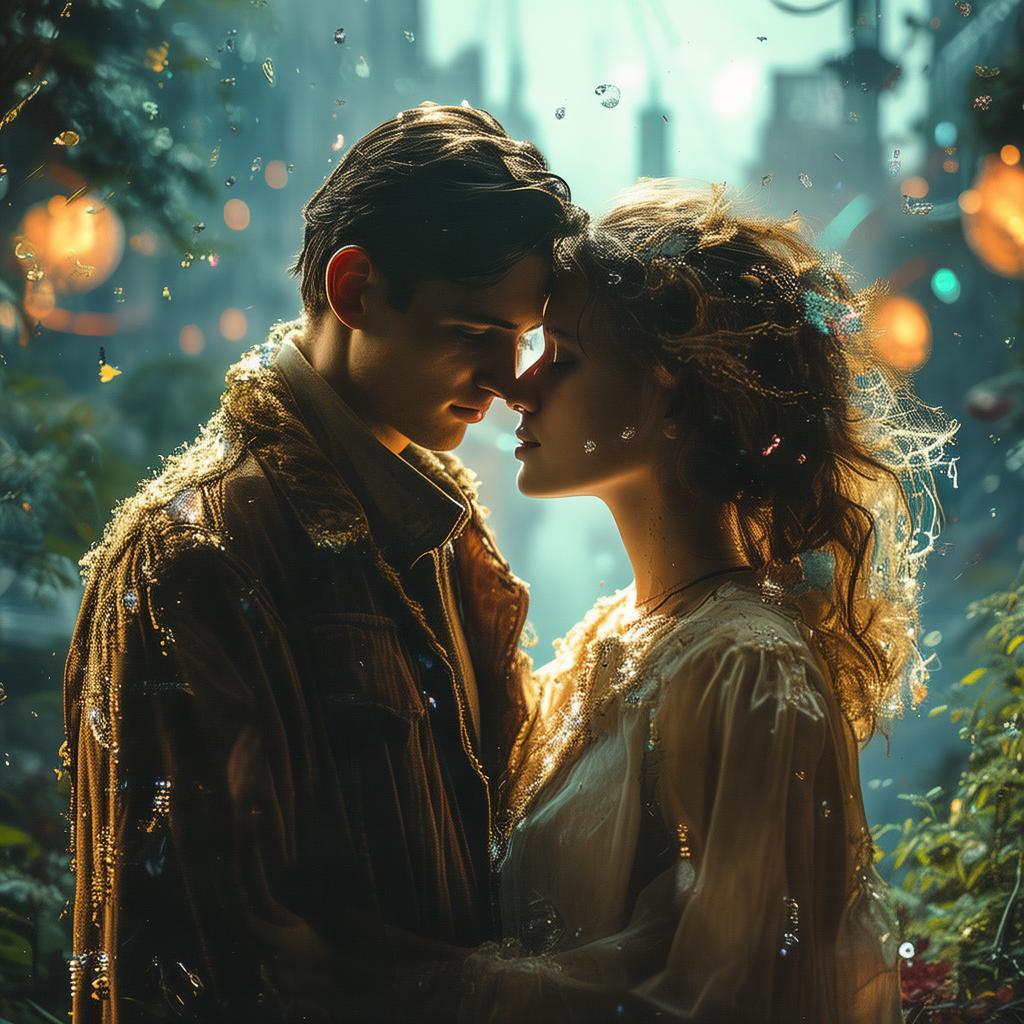The Love Triangle of the Renaissance: A Tale of Passion and Deceit
The sun dipped below the horizon, casting a golden glow over the cobblestone streets of Florence. The air was thick with the scent of blooming jasmine and the distant sound of a lute. In the heart of the city, amidst the grandeur of the Medici palace, a love triangle was brewing, a tale of passion, deceit, and the comedy of human error.
In the grand hall, a group of artists and nobles gathered for the annual ball. The air was abuzz with the laughter of courtiers and the clinking of glasses. At the center of it all was Isabella, a beautiful and witty noblewoman, whose charm was as captivating as her paintings. She danced gracefully, her movements fluid and elegant, her eyes sparkling with mischief.
Amidst the crowd, two artists watched with admiration. One was Michelangelo, the master sculptor, whose hands had shaped the very soul of the Renaissance. The other was Leonardo da Vinci, the polymath whose mind was a labyrinth of ideas and inventions. Both were smitten with Isabella, but their approaches were as different as their talents.
Michelangelo approached Isabella with a proposal of art, offering to sculpt a statue of her that would become a masterpiece. "Your beauty is the canvas upon which I will paint my masterpiece," he declared, his voice filled with passion.
Leonardo, on the other hand, approached with a more playful demeanor. "I have a secret invention that will make you laugh until your sides ache," he said, pulling out a small contraption that looked like a mechanical bird.
Isabella, intrigued by both, decided to play along. She agreed to Michelangelo's proposal, but only if Leonardo could make her laugh. The two men, now competitors, set out to win her heart in their own unique ways.
Michelangelo worked tirelessly on the statue, sculpting every detail with precision and care. Meanwhile, Leonardo spent his nights in the workshop, inventing a series of comical contraptions, each more elaborate than the last.

As the days passed, the rivalry between the two artists grew. Michelangelo became increasingly possessive, while Leonardo's antics became more and more elaborate, often leading to humorous situations that had the entire court in stitches.
One evening, Michelangelo presented the statue to Isabella. She was enchanted, but Leonardo's contraptions had left her laughing so hard that she couldn't help but feel a spark of affection for the inventor.
Leonardo, seeing his chance, decided to up the stakes. He unveiled his most ambitious invention yet: a mechanical suit of armor that could perform a series of comical dances. The court was in awe, and Isabella couldn't help but laugh, her heart softened by Leonardo's playful spirit.
Michelangelo, feeling the weight of his failure, became desperate. He began to act possessively, even to the point of jealousy. Isabella, feeling trapped by Michelangelo's overbearing nature, grew uncomfortable and sought an escape.
One night, as the moon hung low in the sky, Isabella decided to speak her truth. She confessed her feelings for Leonardo to him, hoping he would understand and leave her alone.
Leonardo, taken aback by Isabella's honesty, realized that his feelings for her were genuine. He confessed his love, and the two found themselves in a tender moment, the weight of the competition lifting from their shoulders.
Michelangelo, witnessing this moment, realized the error of his ways. He approached Isabella, not as a rival, but as a friend. He apologized for his possessiveness and wished her happiness with Leonardo.
In the end, Isabella chose Leonardo, not just for his love, but for his understanding and humor. Michelangelo, though his heart was broken, found solace in the fact that he had grown as an artist and a person.
The Renaissance ball ended with laughter and love, a testament to the power of forgiveness and the joy of companionship. The love triangle of the Renaissance had come to a comedic and heartwarming conclusion, leaving a lasting impression on all who had witnessed it.
✨ Original Statement ✨
All articles published on this website (including but not limited to text, images, videos, and other content) are original or authorized for reposting and are protected by relevant laws. Without the explicit written permission of this website, no individual or organization may copy, modify, repost, or use the content for commercial purposes.
If you need to quote or cooperate, please contact this site for authorization. We reserve the right to pursue legal responsibility for any unauthorized use.
Hereby declared.
